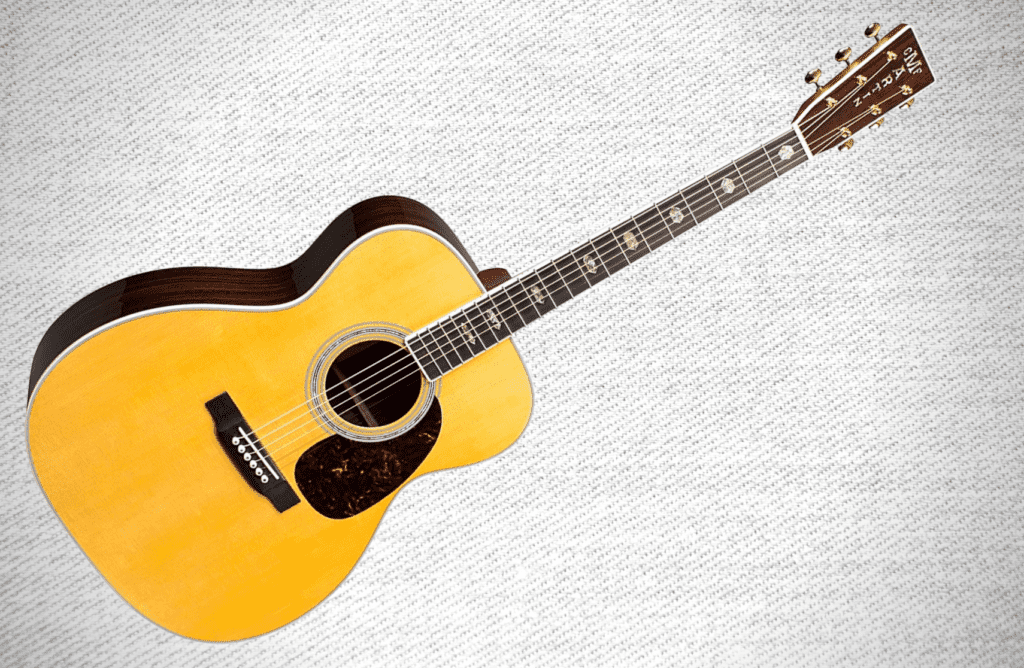Like most consumer products, guitars do not really have any specific ‘intrinsic’ value. They are ‘worth’ whatever a buyer is willing to pay for it. When you are ready to take the next step from your first guitar, knowing how to pay less for a guitar is really handy.
Table of Contents
How does guitar pricing work?
The pricing of guitars is a bit like cars. There are three prices:
- The Factory List Price (FLP), the guitar equivalent of an automobile’s Manufacturer’s Suggested List Price (MSRP)
- The advertised “Best Price”
- The actual selling price.
The dealer generally takes the price from #1 to #2 as a matter of routine sales practice. As is the case with most cars, the actual selling price (#3) is the price that really matters. And, as is the case with the informed purchase of an automobile, is arrived at through a process of negotiation.
Real-life example
A recent purchase, the Martin J40, has a Manufacturer’s List Price (which no informed guitar buyer EVER pays and no dealer who is serious about selling the instrument EVER charges) of $4,199. The manufacturer controls what is referred to as the Minimum Advertised Price (MAP.) This is the lowest amount any authorized retailer is permitted by the manufacturer and distributors to publically display as the “Lowest” or “Best” price. The MAP is NOT the lowest price the guitar can be sold at. It is simply the lowest price that a retailer can advertise. In the case of this J40, that is currently $3,449.
Finally, and most importantly, there is the price that the buyer actually negotiates with the dealer. The numbers that really matter to the dealer are the same two numbers that matter to the car salesperson.
- Their actual cost
- The margin of profit they are willing to accept in the transaction.

Guitar dealers are avoiding negotiation
Guitar dealers, especially some of the larger national chains, count on buyers assuming that the MAP is really the lowest price they are permitted to sell the instrument for.
This is simply and categorically not the case. Any dealer who makes this claim is being blatantly dishonest and probably worth avoiding. If they misrepresent the reality of price, they are likely to misrepresent other things (like service) that may matter to the buyer later on.
In the case of the Martin J40, with a few phone calls to various dealers giving each successive one the opportunity to best the lowest price I had been quoted (privately, over the phone) by the one before it. I wound up paying $2,469. Tax, shipping, and custom hard case included. This is about 59% of the Factory List Price and $950 less than the MAP. Assertively shopping for the best possible price for a guitar is standard smart-buying practice.
Negotiating with online retailers
Contrary to popular (mis)conception, most online sites are just as ready to negotiate the price as are walk-in local retail shops. Many guitar shoppers like to get the best offer they can online and then walk into a local retailer and ask them to match the price. Often they will, though sales taxes can add a hefty boost to the price. That trade-off is perfectly acceptable to many guitar buyers who want to deal with a real person in a local business.
Finishing thoughts
Wherever you decide to make a purchase, spending an hour making phone calls can save a great deal of money. Even on an expensive instrument. Remember that the goal of the dealer is to sell the instrument. If they need to drop their price to make the sale, most will do so.
This is my first time pay a visit at here and i am really happy to read all at
one place.